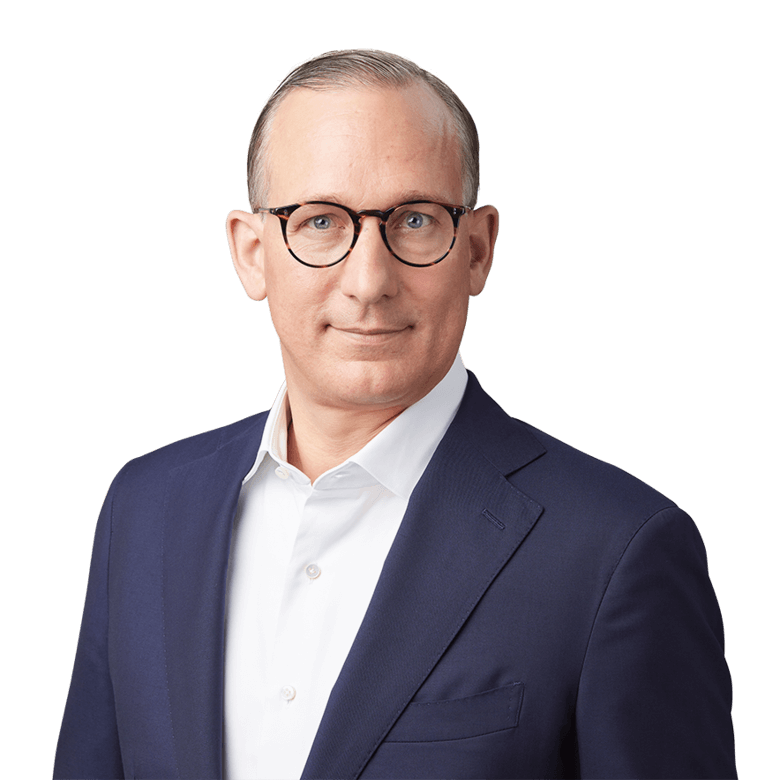
Bellevue Asia Pacific Healthcare
ISIN-No.: LU1587985570
YTD: -1.64%
Active share: 18.42
Anzahl Positionen: 42
Indexed performance (as at: 20.11.2025)
NAV: EUR 145.28 (18.11.2025)
Rolling performance (20.11.2025)
| B-EUR | MSCI Asia Pacific Healthcare Index | MSCI Asia Pacific Index | |
| 18.11.2024 - 18.11.2025 | -1.33% | -5.07% | 13.01% |
| 18.11.2023 - 18.11.2024 | -5.36% | 5.22% | 19.04% |
| 17.11.2022 - 17.11.2023 | -11.40% | -11.70% | 2.83% |
| 17.11.2021 - 17.11.2022 | -25.19% | -16.24% | -14.47% |
Annualized performance (20.11.2025)
| B-EUR | MSCI Asia Pacific Healthcare Index | MSCI Asia Pacific Index | |
| 1 year | -1.33% | -5.07% | 13.01% |
| 3 years | -6.23% | -4.36% | 11.30% |
| 5 years | -8.15% | -5.67% | 6.08% |
| Since Inception p.a. | 1.77% | 2.70% | 6.41% |
Cumulative performance (20.11.2025)
| B-EUR | MSCI Asia Pacific Healthcare Index | MSCI Asia Pacific Index | |
| 1M | -0.27% | -0.65% | 0.23% |
| YTD | -1.64% | -5.32% | 10.66% |
| 1 year | -1.33% | -5.07% | 13.01% |
| 3 years | -17.56% | -12.51% | 37.88% |
| 5 years | -34.63% | -25.30% | 34.33% |
| Since Inception | 16.22% | 25.61% | 70.30% |
Annual performance
| B-EUR | MSCI Asia Pacific Healthcare Index | MSCI Asia Pacific Index | |
| 2024 | -4.03% | 2.42% | 17.13% |
| 2023 | -10.93% | -6.66% | 7.89% |
| 2022 | -19.04% | -12.12% | -12.01% |
| 2021 | -6.15% | -9.43% | 6.02% |
Facts & Key figures
Investment Focus
The fund’s aim is to achieve capital growth in the long term, is actively managed and invests in healthcare stocks of companies that have their registered office or carry out the majority of their economic activity in the healthcare markets of the Asia-Pacific region. Show moreShow less
Investment suitability & Risk
Low risk
High risk
General Information
| Investment Manager | Bellevue Asset Management AG |
| Custodian | CACEIS BANK, LUXEMBOURG BRANCH |
| Fund Administrator | CACEIS BANK, LUXEMBOURG BRANCH |
| Auditor | PriceWaterhouseCoopers |
| Launch date | 28.04.2017 |
| Year end closing | 30. Jun |
| NAV Calculation | Daily "Forward Pricing" |
| Cut of time | 09:00 CET |
| Management Fee | 1.60% |
| Subscription Fee (max.) | 5.00% |
| Performance Fee | 10.00% (with High Water Mark) |
| ISIN number | LU1587985570 |
| Valor number | 36225578 |
| Bloomberg | BEAAPBE LX |
| WKN | A2DPA9 |
Legal Information
| Legal form | Luxembourg UCITS V SICAV |
| SFDR category | Article 8 |
| Redemption period | Daily |
Key data (31.10.2025, base currency USD)
| Beta | 0.88 |
| Volatility | 16.80 |
| Tracking error | 7.93 |
| Active share | 18.42 |
| Correlation | 0.89 |
| Sharpe ratio | -0.23 |
| Information ratio | -0.36 |
| Jensen's alpha | -3.08 |
| No. of positions | 42 |
Portfolio
Top 10 positions
Market capitalization
Geographic breakdown
Breakdown by sector
Benefits & Risks
Benefits
- Access to defensive growth – Asia’s emerging countries are facing aging populations and changing lifestyles.
- An interesting combination of investments in Asian emerging markets and Japanese cutting-edge technology.
- Broad spread across different sectors and company sizes in the Asia-Pacific healthcare industry.
- Attractive valuations compared with the projected medium to long-term growth.
- Bellevue Healthcare Team – top-performing pioneer in the management of healthcare portfolios in emerging markets.
Risks
- The fund actively invests in equities. Equities are subject to price fluctuations and so are also exposed to the risk of price losses.
- Investing in emerging markets entails the additional risk of political and social instability.
- The fund invests in foreign currencies, which means a corresponding degree of currency risk against the reference currency.
- The fund may invest in China A equities. This entails the risk of supervisory changes, volume caps and operating restrictions which may lead to a higher counterparty risk.
- The fund may invest a proportion of its assets in financial instruments that might under certain circumstances have a relatively low level of liquidity, which can in turn affect the fund’s liquidity.
Review / Outlook
Asian stock markets posted a mixed performance in October, with the Nikkei 225 climbing 11.8% and the CSI 300 slightly positive at +0.2%. The Hang Seng Index was down 3.4%, and Australia’s benchmark S&P/ASX 200 declined by 0.8%. Overall, Asia-Pacific equities ended the month higher, gaining 3.6%.
The Asia-Pacific healthcare sector (-1.7%) trailed the broader regional equity market. While the favorable Pfizer deal eased concerns over the most-favored-nation (MFN) pricing model in the US, Asian pharmaceutical companies benefited less than their US and European peers. Sentiment weakened further after the US Senate approved an amendment to the National Defense Authorization Act for FY 2026 on October 9 that included its version of the Biosecure Act, though no specific companies were named. The Bellevue Asia Pacific Healthcare Fund (-3.2%) underperformed its benchmark (-2.4%).
Samsung Biologics (+20.3%), Hoya (+17.5%), Daiichi (+6.1%), Chugai (+4.8%), and Otsuka (+2.2%) were among the top contributors to the fund’s absolute performance. Samsung Biologics had another strong month after confirming that its fourth plant has been operational since Q2 2025 and will begin contributing to revenue in Q3. Hoya delivered strong quarterly earnings driven by its innovative information technology business and secured Toshiba as a customer for its glass substrates for HDDs. At the European Society for Medical Oncology (ESMO) meeting, Daiichi announced positive topline results from its phase 3 TROPION-Breast02 trial evaluating Datroway in patients with metastatic triple-negative breast cancer who were ineligible for immunotherapy. Otsuka posted strong results that exceeded investor expectations.
Akeso (-19.6%), Sino Biopharm (-13.0%), WuXi Biologics (-11.6%), CSL (-11.0%), and Takeda (-7.7%) were the largest detractors from the fund’s absolute performance. Akeso’s phase 3 China HARMONi-6 data was positive, with ivonescimab (AK112) showing a strong progression-free survival (PFS) benefit at the high end of expectations, but the company amended the HARMONi-3 trial protocol. Shares of Sino Biopharm fell amid a slowdown in China’s biotech out-licensing activity, though the company remains in talks to out-license several key drugs. WuXi Biologics continues to show strong fundamentals, but political risk related to the Biosecure Act, which was passed by the US Senate as part of the defense bill on October 9 and has yet to be reconciled with the House, continues to drive short-term share price volatility. CSL lowered its FY 2026 revenue guidance to 2%–3% growth from 4%–5%, citing lower-than-expected flu vaccination rates since August. In addition, the planned spin-off of its vaccine unit, Seqirus, has been delayed. Takeda reported quarterly results below investor expectations and lowered its guidance for FY 2026.
All performance data in USD/B shares.
Asia is the world’s most dynamic growth region, home to more than half of the global population. By 2050, Asian emerging markets are projected to account for over 50% of global GDP. As household incomes rise, economic growth in many Asian countries is expected to shift from manufacturing toward services. A growing middle class is driving stronger demand for modern medicine, with healthcare increasingly ranking as a top priority. Billions are being invested in infrastructure, technology, and research to modernize healthcare systems across emerging markets, expanding access to quality care. At the same time, rapid population aging is further boosting demand. In 25 years’ time, China alone is expected to have nearly 400 million people over the age of 65, creating a significant need for advanced healthcare services and medicines.
Japan, often referred to as «the world’s demographic laboratory,» has been a champion of cutting-edge innovation for decades. The country holds technology leadership in fields ranging from therapeutic antibody development and immunotherapy to robotics, digitalization, diagnostics, and medical imaging systems.
The fund provides defensive exposure to Asian emerging markets while offering attractive opportunities in the region’s technology leaders. Its investments span the entire healthcare value chain, from generic drug manufacturers and biotechnology firms to medical device makers and digital health specialists.
Dokumente
Show moreShow less



